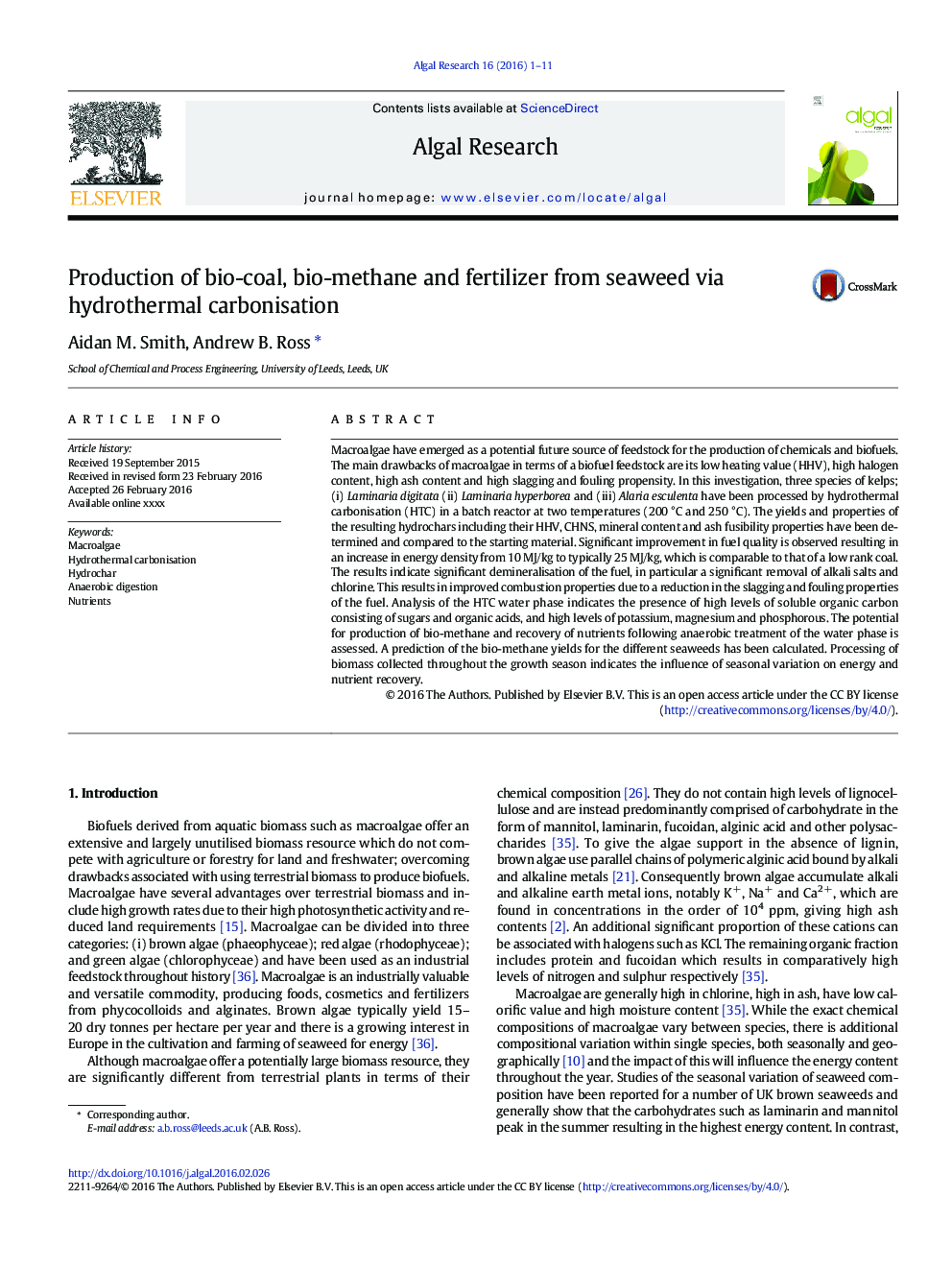| Article ID | Journal | Published Year | Pages | File Type |
|---|---|---|---|---|
| 8087181 | Algal Research | 2016 | 11 Pages |
Abstract
Macroalgae have emerged as a potential future source of feedstock for the production of chemicals and biofuels. The main drawbacks of macroalgae in terms of a biofuel feedstock are its low heating value (HHV), high halogen content, high ash content and high slagging and fouling propensity. In this investigation, three species of kelps; (i) Laminaria digitata (ii) Laminaria hyperborea and (iii) Alaria esculenta have been processed by hydrothermal carbonisation (HTC) in a batch reactor at two temperatures (200 °C and 250 °C). The yields and properties of the resulting hydrochars including their HHV, CHNS, mineral content and ash fusibility properties have been determined and compared to the starting material. Significant improvement in fuel quality is observed resulting in an increase in energy density from 10 MJ/kg to typically 25 MJ/kg, which is comparable to that of a low rank coal. The results indicate significant demineralisation of the fuel, in particular a significant removal of alkali salts and chlorine. This results in improved combustion properties due to a reduction in the slagging and fouling properties of the fuel. Analysis of the HTC water phase indicates the presence of high levels of soluble organic carbon consisting of sugars and organic acids, and high levels of potassium, magnesium and phosphorous. The potential for production of bio-methane and recovery of nutrients following anaerobic treatment of the water phase is assessed. A prediction of the bio-methane yields for the different seaweeds has been calculated. Processing of biomass collected throughout the growth season indicates the influence of seasonal variation on energy and nutrient recovery.
Related Topics
Physical Sciences and Engineering
Energy
Renewable Energy, Sustainability and the Environment
Authors
Aidan M. Smith, Andrew B. Ross,
